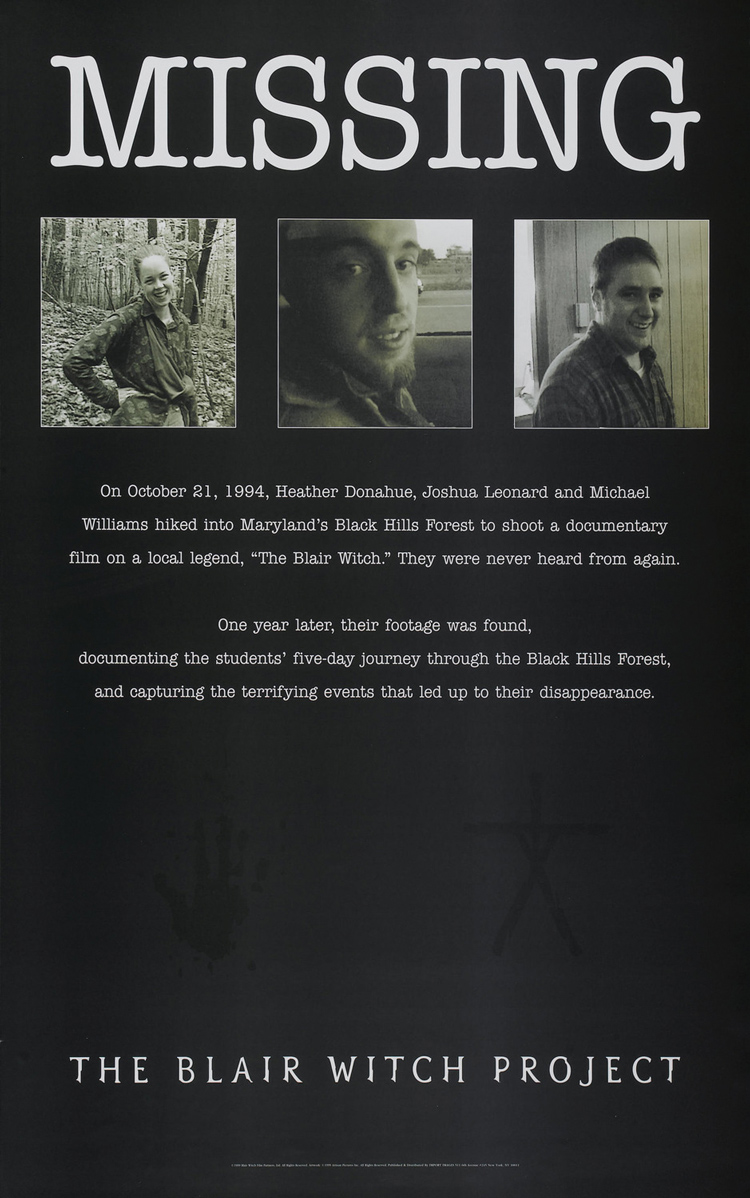To a new generation of filmgoers, the summer blockbusters of 1999 probably seem like they belong to a strange alternate universe – certainly far more dated, and even forgettable, than their relatively meagre 21-year timespan would suggest.
Witness the snore-inducing fantasy-farce of Wild, Wild West and, of course, Star Wars: The Phantom Menace which threw months of expertly crafted hype back in the face of anyone who was hoping for a new George Lucas masterclass. The ‘event’ cinema of the May-August period was, therefore, almost entirely underwhelming, with lowbrow comedy such as Austin Powers: The Spy Who Shagged Me, threadbare monster movie Lake Placid and an awful rehash of the Sixties horror classic The Haunting offering little in the way of big screen thrills and spills.
However, there was one notable exception – a little independent sleeper success that sneaked into American multiplexes on 14 July and, practically overnight, became the must-see shocker of the entire decade.
That film was The Blair Witch Project, a collaboration between graduate genre buffs Daniel Myrick and Eduardo Sánchez which had, earlier in the year, taken Sundance by storm and encouraged a bidding war among distributors… “That whole period was just such a crazy time,” reflects Myrick when SciFiNow catches up with him. “We had started to develop The Blair Witch Project at film school and we got to Sundance and suddenly we had all of this buzz after the first screening. It was reported that people were fainting and that is the best publicity you can ask for [laughs]. So after that we knew that we had a potential sale and Ed Sánchez and I were back at our hotel saying: ‘Well, this is still a small indie film so let’s not get too excited. We are probably going to be the size of Pi’ – which had shown at Sundance the year before. So as far as we were concerned, we thought we had something that was potentially successful but only as an independent film. We were not prepared for it to break out in the way it did. No one could have anticipated that we were going to be the must-see movie of the summer. Are you crazy? Who could have ever imagined that?”
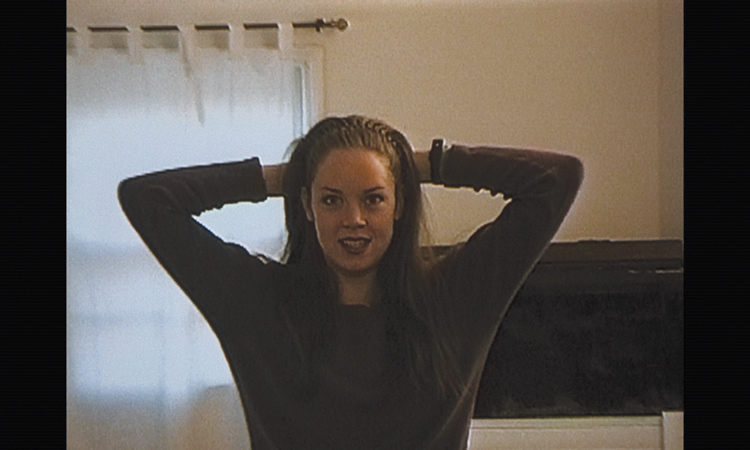
Yet, that is exactly what happened to The Blair Witch Project. Moreover, with a solid deal from the troubled, but still prominent, independent distributor Artisan Entertainment (who had hit gold in the Eighties with Dirty Dancing) – Myrick and Sánchez arrived with plenty of ‘outsider’ cred. Yet even Artisan probably never expected that, largely due to positive critic reviews and excellent word-of-mouth from Sundance, The Blair Witch Project was poised to be the tenth highest grossing film of the year…
“Yeah, it was a tiny $30,000 film that somehow ended up in theatres all over the world,” laughs Sánchez. “I think, looking back, that it became way too big for what it was intended for. I have said this before too… it was a very small film and no movie of that size before us came close to doing what Blair Witch did. This was something that was crafted by three or four guys on their credit cards and very few films are made like that – maybe Clerks or El Mariachi – and I think that Blair Witch belongs with those films. Maybe it should have done $3 or $4 million at the box office and everyone who saw it loved it and it went on to become this little gem that you passed onto people and urged them to check out. That was what the experience was before it came out in the multiplex. It was seen at the dead of winter in a little theatre in Sundance and that worked for people.”
However, Artisan knew it had something special and immediately went to work commissioning a prequel/sequel of sorts – set immediately after The Blair Witch Project but designed to introduce audiences to the main attraction via an extensive and lurid backstory. The insightful mockumentary Curse Of The Blair Witch would air on Sci-Fi (now Syfy) Channel in the summer of 1999 – leading to more anticipation for the real thing. Running at 44 minutes, Curse Of The Blair Witch offered audiences some insight into the mythology of Elly Kedward – a wayward old kook who was rumoured to have been expelled from the area in the 18th century for practicing witchcraft. Kedward’s spirit is later said to have possessed a local woodsman called Rustin Parr, leading to a spree of child sacrifices in the Forties and, ultimately, to the 1996 student investigation and the disappearance of the trio of youth videographers. The three missing youths is presented in Curse Of The Blair Witch as an ongoing mystery among Maryland locals.
Making the teenagers’ vanishing all the more ominous, The Blair Witch Project also took advantage of the internet and presented the case as ‘genuine’, hoodwinking many an audience member…
“I remember when I first saw The Texas Chain Saw Massacre and I thought that the director must actually be insane because it was so real and so terrifying,” states Sánchez. “I wanted The Blair Witch Project to be a little like that. I wanted people to think it was real – kind of like a snuff film. I do not think that we invented reality television because it was there long before us, you had Cops and MTV had The Real World, but I think the movie had something to do with the reality boom and pushing people and other filmmakers in that direction. Before it got really saturated and people began to lash out against it, there were a lot of audience members who really got involved in The Blair Witch Project and thought it was the real deal.”
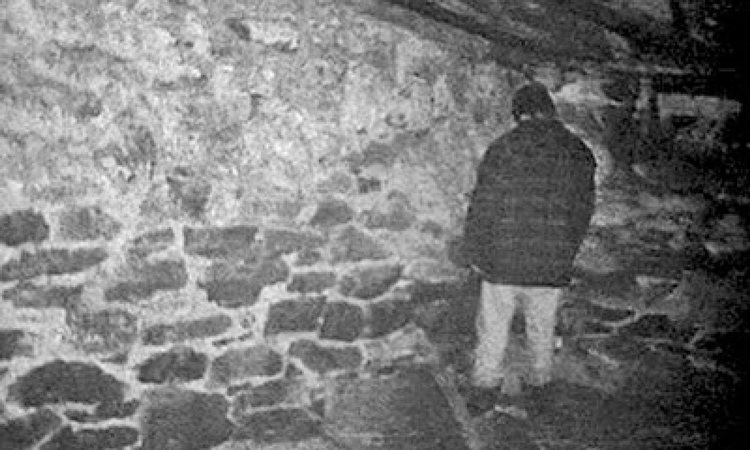
Unfortunately, when it was unleashed to the masses, there was a noticeable disappointment as some so-called ‘smart’ genre buffs bemoaned the lack of gore, visible death or even a viewable antagonist in The Blair Witch Project. Relying purely on suggestion and intelligent mind games, the sinister supernatural shocker worked best as an unexpected chiller that snuck-up from left-field (this writer still remembers seeing its UK premiere in a tiny little outlet at the Edinburgh Film Festival and with a terrified audience leaving the cinema afterwards).
“After its success at Sundance it was blown up and given to the masses who expected a certain kind of horror film and want a set number of things from their scary movies,” continues Sánchez. “I think when you big something up too much it eventually hurts the movie and Artisan did an amazing campaign – they hyped this up as the film you wanted to see that summer, even over The Phantom Menace [laughs]. So I don’t really blame people who went to see it, thinking it was going to be part of that summer blockbuster crowd, and came out disappointed. That has happened to me before too. I remember I waited a little while before I saw The Dark Knight and it was a good film but the way people were talking about it, I expected it to change my life, you know? But after I walked out of the cinema, I had no desire to see it again. So I think the hype eventually hurt Blair Witch.”
Adding to the marketability of The Blair Witch Project, Artisan quickly commissioned comic books, tie-in novels, a videogame and (wait for it) a McFarland action figure of the ‘witch’ herself – despite the fact she is never even seen in the film. Meanwhile, more seasoned fright-film fanatics accused Myrick and Sánchez of taking their idea from Ruggero Deodato’s notorious gut-muncher Cannibal Holocaust (1980), whilst two concurrent independent directors, Stefan Avalos and Lance Weiler, argued that their project, The Last Broadcast, released in 1998, had similarities with The Blair Witch Project that could not be ignored…
“I do not take credit for inventing a new genre, because all movies are a hybrid or a product from everything the filmmaker has been exposed to in life,” explains Myrick. “However, in those two cases we simply had not seen the movies. The Last Broadcast had not been released when we began to work on our film, and Cannibal Holocaust was not on our radar because it was not something anybody really knew about back then. It had been banned for so long and I honestly only heard about it after The Blair Witch Project did Sundance and someone said: ‘Hey, have you guys seen Cannibal Holocaust?’ Now that is not me dodging anything because I am happy to go on record about some of the inspirations for The Blair Witch Projects, which were the old In Search Of series with Leonard Nimoy from the Seventies. They were quasi-documentaries that delved into everything from telekinesis and bigfoot to UFOs. They were austere and pragmatic – they felt real and authentic. That really freaked me out as a kid. And Ed and I also loved a horror movie called The Legend Of Boggy Creek, which had a limited theatrical release and I saw it when I was very young. It does not quite hold up but back when I was a child there were some scenes that really traumatised me. We wanted to try and recapture some of these moments in our film – and that was the movie we referred to when we began work on The Blair Witch Project. Part of our frustration was that back then nothing was really scary. You were getting these big budget horror fests with lots of production values and effects and everything but it was kind of like watching a sitcom with a laugh track – everything was so foreshadowed. At the end of these horror movies you were not scared. We wanted to get really primal with Blair Witch and bring that sense of fear back.”
With a profit stretching to $250 million, on that miniscule budget of $30,000, it is probably no surprise that Myrick and Sánchez were asked to rush a sequel into production. However, the end result was not what many fans must have anticipated. Directed by Joe Berlinger, whose first-class documentary work had included the notorious Paradise Lost: The Child Murders At Robin Hood Hills (1996), which raised awareness to the plight of the West Memphis Three, Book Of Shadows: Blair Witch 2 removes itself from the faux-documentary of its predecessor and attempts to challenge the very idea of televised ‘reality’. The concept of the film, which focuses on a tour group of youngsters visiting the locations of the original, seems to be inviting audiences to pick apart the very idea of ‘TV movies’ based on real crimes. It is a not a worthless experiment, although it has dated terribly, but Book Of Shadows becomes so wrapped-up in its own ponderous reflexivity that it fails to work as any sort of scary movie…
“On its own merits, I think it is a perfectly fine film,” says Myrick, who along with Sánchez produced Book Of Shadows. “Unfortunately, it was living up to the cultural phenomenon that preceded it. One of our problems with Artisan wanting to do a sequel to Blair Witch was that we kept telling them that the hype had to die down first. People had overdosed on Blair Witch mania in the summer of 1999 and we advised them to give it a couple of years before trying to do something with the franchise. But they were in a hurry and I think that hurt the film in some ways. From a creative perspective the second film broke the mythology, it became self-referential, which is something we were never in agreement with. I think that in both the mainstream audience’s eyes and the eyes of the Blair Witch fans it just never satisfied anyone… Nobody came out of Book Of Shadows and said: ‘Yeah, I cannot wait for The Blair Project Part 3.’”
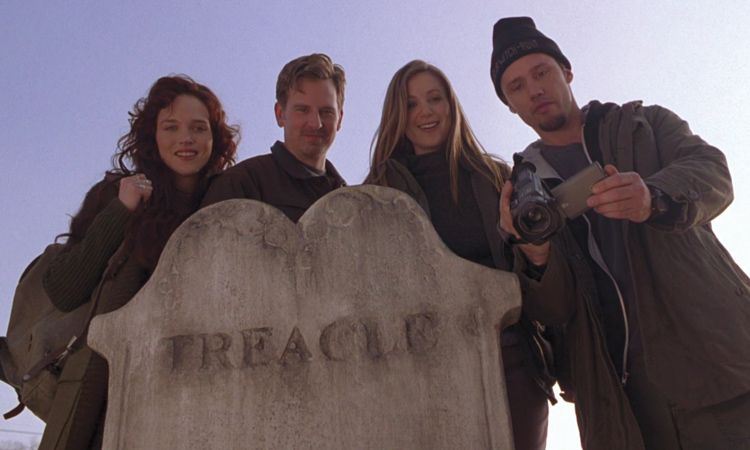
Sánchez, who like Myrick took a hiatus from filmmaking after the critical and fan backlash to Book Of Shadows (“we got paid really well and took a break from the business,” he admits), concurs about the sequel… “It was the wrong reason to make a film from the outset – it was about Artisan making money and not taking the time to craft something worthwhile,” he states.
“It is a shame because Joe Berlinger is a very talented filmmaker and when he got involved I thought maybe it might turn out to be a good movie after all. And Joe tried to do his best but Artisan just wanted something that they could market the hell out of. It was a corporate plan and it was made for corporate reasons. But, you know, with all of that said I have seen much, much worse films. I don’t think Book Of Shadows is the worst movie ever made or anything – it just is not very good. All you need to do is listen to Joe Berlinger’s commentary on his DVD and you can hear what he was going up against [laughs].”
Nevertheless, for years after Book Of Shadows (which despite the critical mauling was still a minor box office success) rumours occasionally surfaced that the franchise would make a return. Myrick and Sánchez, who made a comeback in the mid-Noughties with a series of low budget direct-to-video projects, had even taken their idea for a prequel, based around the Rustin Parr story, to Lion’s Gate (who purchased the flailing Artisan Entertainment in 2003). Nonetheless, the project never happened. And when the iconic found-footage film did make its comeback it would be without its creators at the helm.
Produced in secrecy under the moniker of The Woods, and directed by Adam Wingard (of You’re Next fame), Blair Witch was unveiled at the 2016 San Diego Comic Con before unspooling in cinemas that September. The story picks up 15 years after the first, with Heather Donahue’s brother going in search of his sister after she is seen in a mysterious YouTube video. And with modern technology galore, the likelihood of history repeating itself in the woods of Burkittsville is a long shot.
Right?
“I wanted to be able to re-approach what I remembered wanting out of a sequel to the original Blair Witch Project,” Wingard would state to The New York Times prior to the film’s theatrical spin. “I was very disappointed with Book Of Shadows when it came out because it didn’t understand what, as a fan, I wanted to get out of it. I wanted to see the Aliens approach to Blair Witch, where you have the first film in the Alien series, which is kind of a quiet build. And then a sequel where you just kind of go all-out.”
Although it takes its cues from the Spanish zombie-sickie REC, itself owing its existence to the work of Myrick and Sánchez, Blair Witch is an audacious and exciting sequel – despite its mediocre box office and surprisingly mixed critical reception. Aiming high, and featuring some spine-tingling moments of understated threat, as well as a bombastic and satisfying conclusion – Wingard managed to make the ideal, modern-day sequel to one of the great American horror movies. Moreover, that The Blair Witch Project is considered prolific and ‘classic’ is enough to warrant a belated follow-up that does not languish in the direct-to-DVD market is a minor miracle in itself…
“A cinema release is certainly extremely difficult these days,” reflects Myrick. “The world has changed so much since we did The Blair Witch Project. The glut of movies out in the marketplace means it is increasingly difficult to get into the cinemas. There is the prestige factor that filmmakers hope for with a wide, or modest, theatrical release but it is not easy to obtain that. Arthouse cinemas are closing down, independent distributors are closing down, people are being bought out – every time you turn around the marketplace is becoming more polarised between Hollywood blockbusters and small micro-budgeted stuff. Anything in the middle of that is finding it harder and harder to get into the cinemas. And I absolutely respect, admire and wish the very best to any film that manages that. I hope there are many more Blair Witch movies.”
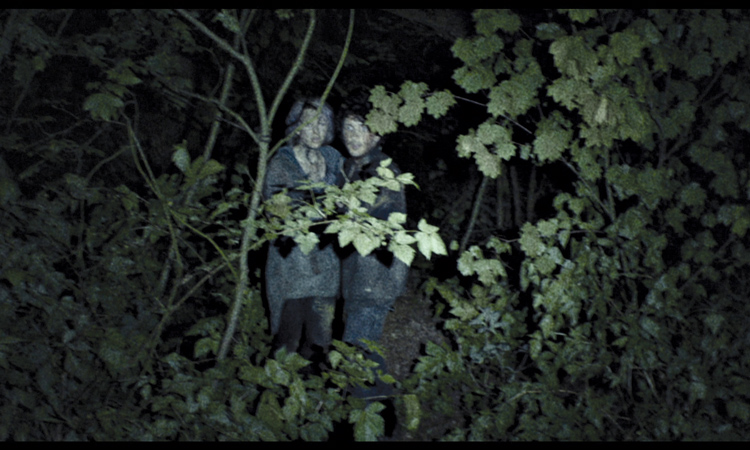
Not that Myrick and Sánchez have totally let The Blair Witch Project leave their lives. Indeed, despite the fact that the third entry in the mythology (or fourth if we include Curse Of The Blair Witch) never quite lit the box office on fire, both men are eager to see their supernatural and manipulative antagonist – who is finally revealed in the third film – return to terrorise audiences some time in the future…
“I would certainly love to collaborate with Ed on more Blair Witch films,” states Myrick. “We had that idea to do a prequel about the child murders in the Forties, and what was really behind this guy going insane, and it would be a period horror-movie, which we thought would be cool – although it is not so uncommon anymore as it was ten years ago [laughs]. I think that there are a number of fans out there who would appreciate another entry in the franchise. I am always interested in doing something new with the idea but the ultimate decision comes down to Lion’s Gate.”
Sánchez is equally enthusiastic about the fact that his little ‘home-made’ horror flick still inspires a following and a legacy all these years later… “We began discussing another really great prequel idea,” he enthuses. “It would be this horrific story about witchcraft that takes place in the late seventeen-hundreds and it would be set in the middle of the winter. It would be the genesis of the witch and how she came to haunt the woods. But whatever happens, I am just glad that Hollywood eventually picked up on the idea of The Blair Witch Project. It took a while but I saw the influence on Cloverfield, which I really enjoyed, and then of course the Paranormal Activity series. And I wonder if our audience crossed over to J-horror as well – you know, that more subtle and suspenseful ghost story that existed without gore or post-modernism. I am a huge fan of the Japanese horror movies and I try and see as many as I can. That is what I have tried to make ever since The Blair Witch Project – just scary, subtle horror cinema that causes a few goose-bumps when you turn the lights off…”
The Blair Witch Project and Blair Witch are available on Blu-ray from Lion’s Gate Home Entertainment. Book Of Shadows: Blair Witch 2 is available on DVD from Momentum Pictures.
